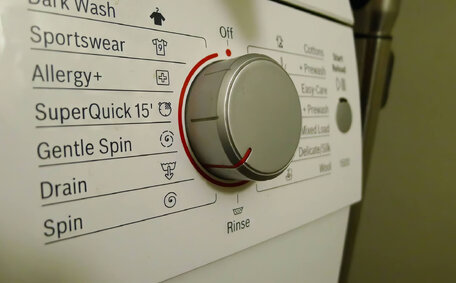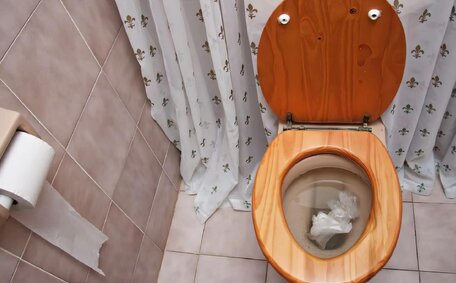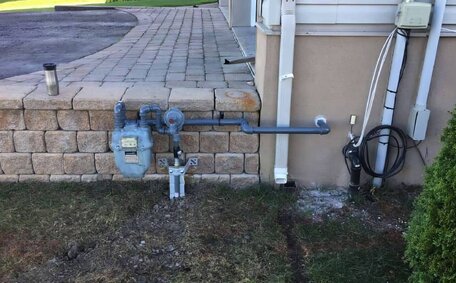Differences Between Indoor and Outdoor Gas Heaters
Indoor and outdoor gas heaters have crucial differences in design and safety features. Outdoor gas heaters, such as patio heaters, are specifically designed for external use to provide comfort on cool evenings. Using unflued gas heaters inside poses serious health risks such as carbon monoxide poisoning.
Indoor models have ventilation systems that vary depending on model and sensors to ensure combustion fumes vent outside. Latest models come equipped with automatic shut-off mechanisms if tipped and sophisticated sensors to gauge levels carbon monoxide. Before using outdoor units for extended periods, consider their lack of safety features; these appliances can operate without such mechanisms in open areas.
Another key difference is the materials used when manufacturers use gas heating technology. Outdoor heaters have less stringent requirements to reduce air pollutants, including nitrogen dioxide, a compound known to exacerbate childhood asthma. Choosing to use outdoor models indoors can inadvertently increase indoor air pollution levels of carbon dioxide and nitrogen dioxide, which is particularly harmful to children’s respiratory health.
Indoor heaters constructed of galvanised steel or aluminium alloy are subjected to extensive testing to adhere to safety standards for indoor air contaminants.
Proper installation is vital for safety, as outdoor heaters must be positioned according to manufacturer guidelines to ensure emission levels remain safe. Outdoor units might seem convenient; however, you should be cautious about using these in an enclosed space.
In summary, the core differences involve design, materials, safety features, and decisions one should make regarding installation for various types of heaters. Using outdoor gas heaters indoors puts occupants at risk due to the lack of mechanisms for proper combustion and ventilation.
Carbon Monoxide Risks of Using Gas Heaters Indoors
The risk to your health from carbon monoxide CO exposure escalates with the indoor use of natural gas heaters if rooms lack proper ventilation. This insidious, odourless gas, which you can’t see, emanates from incomplete combustion and becomes lethal if inhaled at high levels of carbon monoxide for long periods of time.
A functioning carbon monoxide (CO) alarm is essential as symptoms of CO poisoning like headaches and dizziness can often be overlooked or misattributed. Nevertheless, the perils intensify as levels carbon monoxide can cause insidious harm and is a hazard you can neither see nor smell without the support of reliable alarms. Persistent exposure to even moderate monoxide CO levels, which you can neither see nor smell, may culminate in neurological and cardiovascular impairments.
Every indoor gas appliance necessities professional installation with suitable flues or ducting to ensure exhaust gases can effectively vent outside. It’s critical to never block the flue or operate a faulty gas heater that is damaged or leaking indoors.
Ensuring your gas heater is serviced annually is crucial for checking potential leaks or blockages. It’s essential to consider 'what do I do with an unflued gas heater?' and implement fresh airflow strategies when operating your gas appliances.
Installing a carbon monoxide alarm as an extra precaution near sleeping areas and on each level of the home is crucial. Test them monthly to ensure your heating equipment, especially if it is 10 years old or more, functions correctly and plan for replacement according to the sensor’s lifespan. It’s crucial to keep your gas heater safe by being aware of the risks associated with CO poisoning and its warning signs, educating household occupants to safeguard health in the long term.
Ventilation Requirements for Safe Indoor Gas Heater Use
Using gas heaters indoors demands proper ventilation to prevent dangerous buildup of emissions like carbon monoxide. Ventilation is vital to safely use unflued gas heaters, and prevent a build up of lethal combustion byproducts.
Adhering to the manufacturer’s advised ducting specifications for securely installed flued gas heaters ensures that homeowners use their gas heater responsibly while expelling exhaust outside. To avoid contact with flammable materials, ducting needs an unobstructed path outdoors, be sloped slightly upwards, have the correct diameter, and be made of non-flammable material. Correct positioning of the flue terminal is essential for safe gas heater use, ensuring suitable clearance from windows or vents and secure shut-off capabilities when not in operation.
Regarding portable gas heaters, particularly unflued models, heightened vigilance is necessary due to their direct emission of combustion fumes into living areas.
It is imperative to never use an unflued gas heater during the night or within restricted areas such as bathrooms or sleeping quarters. Ensure doors and windows are open to facilitate adequate fresh air circulation.
Verify the room size against the heater’s rating plate to ensure it meets the minimum area specifications. Operate an unflued gas heater for a maximum of four hours at a stretch. Surpassing prescribed safety thresholds can lead to dangerous levels of carbon monoxide, as well as the peril of suffocation from diminished oxygen concentrations. Regular servicing is imperative to maintain safe carbon emission levels and ensure proper operation and supervision of indoor gas heating.
Regular Maintenance for Gas Heater Safety
For safe operation and efficient heating, it’s crucial to have your gas heater serviced by a licensed technician. This should occur:
- At least once every two years for systems such as ducted heaters or wall furnaces
- Annually for space heaters
Checks ensure proper gas pressure and are essential, showing how to use your heater safely, inspect for leaks in fittings or pipes using leak detection spray or electronic detectors. The technician will assess if flames are burning cleanly, which can make a significant difference in safety for your area, and conduct carbon monoxide testing around the unit while running.
It’s also important to keep pets away from gas heaters and visually check appliance vents and ducts regularly for any blockages which can trap exhaust gases inside. Make sure the pilot light is working and the burner ignites properly, as faulty ignition can render heaters safe to use, yet increase levels of carbon monoxide that can be produced.
Regular maintenance extends the lifespan of gas central heating systems, a more eco-friendly option compared to electric heaters. Neglecting checks places homes at an increased risk of incidents that could harm your property, including toxic gas incidents or fires stemming from gas leaks. Being diligent helps to keep your gas heater operating safely for many years.
Choosing a Safe Gas Heater
When selecting an indoor gas heater in Australia, check that it meets the mandatory Australian Gas Association (AGA) approval standards. This confirms that appliances are tested and approved for safe indoor use, ensuring a secure environment.
In pursuit of indoor safety, homeowners often ponder, 'If I have an unflued model, what do I do?' A flued heater is the recommended alternative, as they expel combustion by-products outside through ducting. Ducting needs proper installation so consult a licenced technician. Flued heaters have a self-contained flue system and don’t need ducting but still vent externally, making them a safer choice over unflued.
Look for safety features like an auto shut off if tipped and anti-asphyxiation sensors that detect low oxygen.
Check the safety rating – higher stars indicate reduced toxic emissions. Select the proper heater size for the floor space. Situate away from corners or objects and ensure ample clearance.
Wall furnaces, space heaters, and decorative log fires should all bear the AGA certification. If concerned about air quality, catalytic conversion models filter out some harmful byproducts. Dual fuel heaters, also known as LPG heaters, offer the flexibility of using natural gas and the option to switch to LPG when necessary.
The top indoor gas heaters comply with Australian standards, feature numerous safety mechanisms, and are suitably sized and installed for the intended area. This prevents leaking emissions and disasters like fires or carbon monoxide poisoning.
Signs of Carbon Monoxide Poisoning
Recognising the symptoms of carbon monoxide (CO) poisoning is crucial for preventing harm to your health. Symptoms are often compared to flu but without fever. Look out for:
- Headaches
- Dizziness
- Nausea and vomiting
- Fatigue and muscle weakness
- Shortness of breath
- Confusion and impaired judgement
The perils intensify as the gas can’t be seen or smelled, underlining the necessity for reliable alarms. Exposure while asleep is extremely hazardous.
If you suspect CO poisoning, immediately get outside to fresh air and consider what actions to do next. Identify and repair the source of the gas leak before reoccupying the area.
Seek medical help even if symptoms resolve. Verify appliances are maintained and properly vented before reuse.
Installing CO alarms on every level of the home provides an extra critical, lifesaving layer of protection. Test them monthly and never ignore an activation - make sure your environment is promptly cleared of CO which builds up swiftly to toxic levels.
Importance of Regular Gas Heater Servicing
Consistent servicing, as recommended on this page, is essential to ensure the safe and optimal performance of gas heaters. Mandated by Australian standards, heaters safe use often relies on the expertise of a licenced technician to service ducted or wall furnaces every 2 years, with annual upkeep for space heaters.
During servicing, certify that using your gas heater remains optimal and keep children and pets away from gas while undergoing a thorough checkup by the licensed technician who will:
- Check gas pressure and connections for leaks
- Assess flame quality and conduct carbon monoxide testing
- Ensure proper ventilation and flues are clear
- Test sensors and safety cut-offs work correctly
With regular servicing, issues with your heater can be detected early before developing into dangerous situations. Neglected heaters, much like improper gas cooking practices, can cause higher risks of emitting toxic fumes, gas leaks causing explosions or fires, and carbon monoxide poisoning.
Maintenance also keeps heaters working efficiently, saving on running costs, benefiting you in the long run. Catching minor repairs early on avoids more expensive fixes down the track.
While servicing every 12 months provides assurance of safe functioning for households, biannual checks are prudent for rental properties or commercial applications where usage is higher.
Making gas heater servicing a regular routine safeguards your home investment while proactively ensuring the safety of your family, tenants or staff. Don’t cut corners - the small price of maintenance outweighs the devastating consequences of a gas heater incident.
Summary of Gas Heater Safety Tips
To ensure you can use propane heaters indoors safely, heed the following top tips:
- Have a licenced technician install fixed flued heaters per manufacturer guidelines. Ensure ducting vents outside.
- It’s crucial to use propane heater models suitable for indoor environments to avoid the risk of CO poisoning.
- Situate heaters away from objects with 1m clearance. Check appliance rating plate for room size.
- Ensure proper air circulation and fresh airflow when operating your gas heater, particularly indoors, as this is key to dispersing emissions.
- Install CO alarms, keeping children and pets away from gas areas, and replace sensors every 5-7 years.
- Keep children/pets away from operating heaters.
- Have your heater serviced annually (ducted & wall) or biennially (portable).
- If pilot light repeatedly goes out, smells, makes noises or shows signs of damage, discontinue use and contact a technician.
Following gas heater instructions for safe, efficient operation prevents leaked emissions resulting in reduced indoor air quality or disasters like fires, explosions and CO poisoning. Stay vigilant and don’t hesitate to contact a licensed gas fitter for maintenance or repairs.






